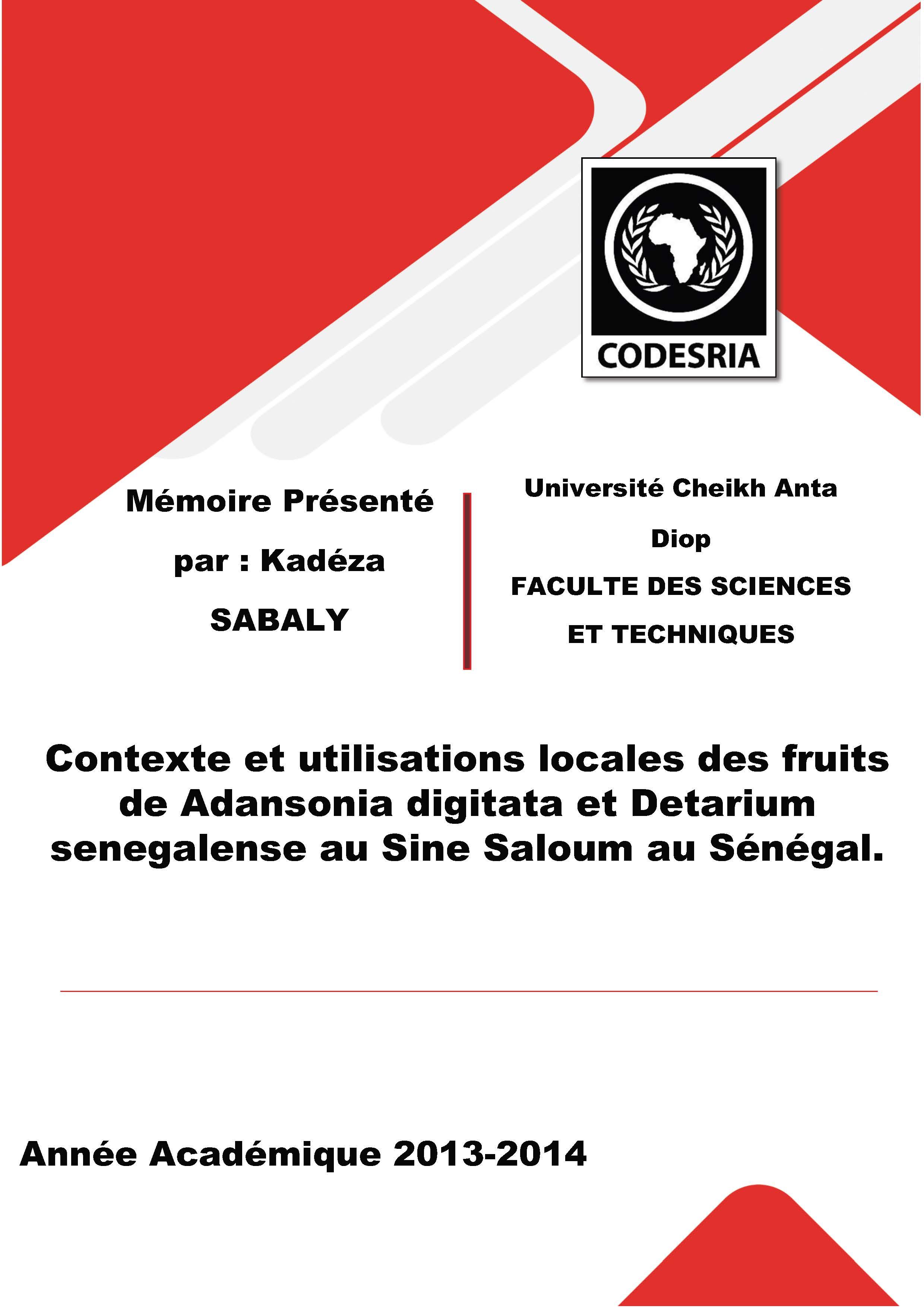Contexte et utilisations locales des fruits de Adansonia digitata et Detarium senegalense au Sine Saloum au Sénégal.
Keywords:
Fruits, alimentation, thérapie, traitement, connaissances indigènes, conservation des fruits, adansonia digitata, bouye, detarium senegalense, ditax, Sine Saloum, SenegalSynopsis
The international community has been slow to admit the existence of knowledge and skills that are manifested in local use among Aboriginal peoples. These endangered knowledges are a loss for all humanity. The legal instruments that can serve as a protection are quite limited compared to multinational threats. It is at this level that research can contribute to more effective legal texts.
This study whose objective is to know the local uses fruit of Adansonia digitata and Detarium senegalense was carried out in the natural region of Sine Saloum precisely Diagan Sader, Sam Walo Ndiayen Santhie and Mounde.
The Bouye and Ditax were selected on the basis of abundance and fairly frequent use criteria. The focus is on women's knowledge, primary users of NWFP. The methodology used is the documentation, consultation with resource persons, the choice of towns, the development tools of research, data collection and processing, identification of constraints.
The results of the study show some knowledge of women about the uses of these wild fruits in therapy, feeding, processing and preservation techniques; we can also note the abandonment of ancient expertise in favor of more modern processes. The natural environment favorable to the development of the two species is being degraded. Would not it be then rethink the model of capitalist development unsuitable as appropriate to the use of old practices?
Downloads
References
Assogbadjo et Loo (2011) : Adansonia digitata, baobab.
Bachelard Gaston, (1938) : la formation de l’esprit scientifique, éditions Vrin.
Bergeret Anne, Ribot Jesse C., (1990)-L’arbre nourricier en pays sahélien. Ministèrede la coopération et du développement. Editions de la Maison des sciences del’homme, Paris, 237p.
Cormier-Salem M.C., Roussel B., (2000)- Patrimoines naturels : la surenchérie. Larecherche, 333, numéro spécial juillet-août 2OOO :106-110.
Diedhiou Mamadou, (2005-2006) Mémoire DEA : savoirs locaux, conservation de labiodiversité et gestion durable des aires protégés : l’exemple de la réserve debiosphère du delta du Saloum, mémoire de DEA en sciences de l’environnement ISE.
Diop Nafissatou, (2013) : Caractérisation du Ditax et l’étude de sa transformation ennectar, thèse de doctorat.
FAO www.fao.org/gender/gender-home/gender-programme/gender-naturel/fr/
FAO, documents archives n° d’identification X0233:Genre et sécurité alimentaire.
Gaarder Jostein (1995) : le monde de Sophie, Editions du seuil.
Garnaud Sébastien, (2006) : Baobab : L’arbre pharmacien, l’arbre de vie.
http://www.worldbank.org/afr/ik/default.htm
Kane Abdoulaye Elimane (1976) : Connaissance africaine et mentalité préscientifique,Etude épistémologique, thèse de 3e cycle, Université de Paris 1 Panthéon-Sorbonne.
Kerharo et Adam, (1974) : Pharmacopée sénégalaise traditionnelle : plantesmédicinales et toxiques, éditions Vigot Fréres, Paris, 1011 pages.
Lebakeng Teboho J. (2010) : discours sur les systèmes autochtones de connaissances,Bulletin du COESRIA, N°1&2, Page 2.






